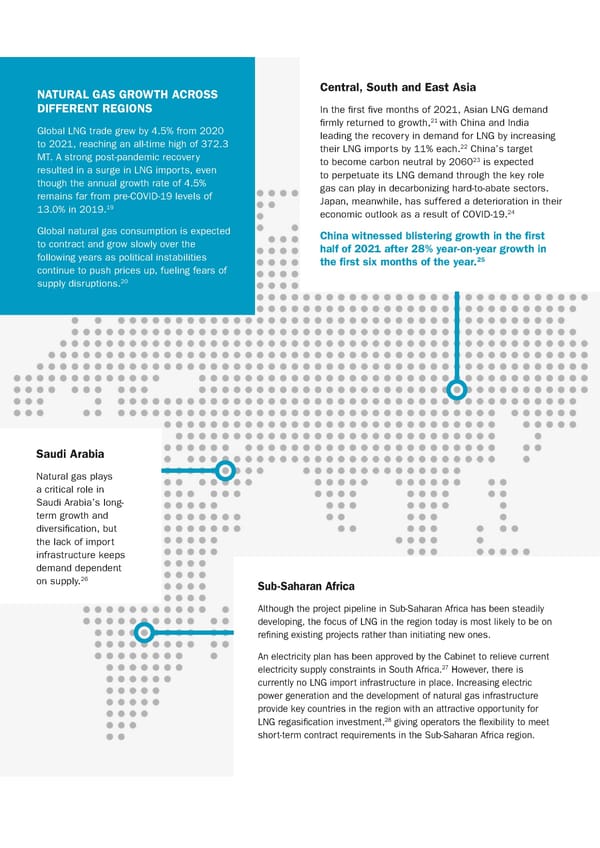NATURAL GAS GROWTH ACROSS Central, South and East Asia DIFFERENT REGIONS In the first five months of 2021, Asian LNG demand 21 Global LNG trade grew by 4.5% from 2020 firmly returned to growth, with China and India to 2021, reaching an all-time high of 372.3 leading the recovery in demand for LNG by increasing 22 MT. A strong post-pandemic recovery their LNG imports by 11% each. China’s target 23 resulted in a surge in LNG imports, even to become carbon neutral by 2060 is expected though the annual growth rate of 4.5% to perpetuate its LNG demand through the key role remains far from pre-COVID-19 levels of gas can play in decarbonizing hard-to-abate sectors. 19 Japan, meanwhile, has suffered a deterioration in their 13.0% in 2019. 24 economic outlook as a result of COVID-19. Global natural gas consumption is expected China witnessed blistering growth in the first to contract and grow slowly over the half of 2021 after 28% year-on-year growth in following years as political instabilities the first six months of the year.25 continue to push prices up, fueling fears of 20 supply disruptions. Saudi Arabia Natural gas plays a critical role in Saudi Arabia’s long- term growth and diversification, but the lack of import infrastructure keeps demand dependent 26 on supply. Sub-Saharan Africa Although the project pipeline in Sub-Saharan Africa has been steadily developing, the focus of LNG in the region today is most likely to be on refining existing projects rather than initiating new ones. An electricity plan has been approved by the Cabinet to relieve current 27 electricity supply constraints in South Africa. However, there is currently no LNG import infrastructure in place. Increasing electric power generation and the development of natural gas infrastructure provide key countries in the region with an attractive opportunity for 28 LNG regasification investment, giving operators the flexibility to meet short-term contract requirements in the Sub-Saharan Africa region.
 TM&I LNG Flexibility Factor Report Page 8 Page 10
TM&I LNG Flexibility Factor Report Page 8 Page 10